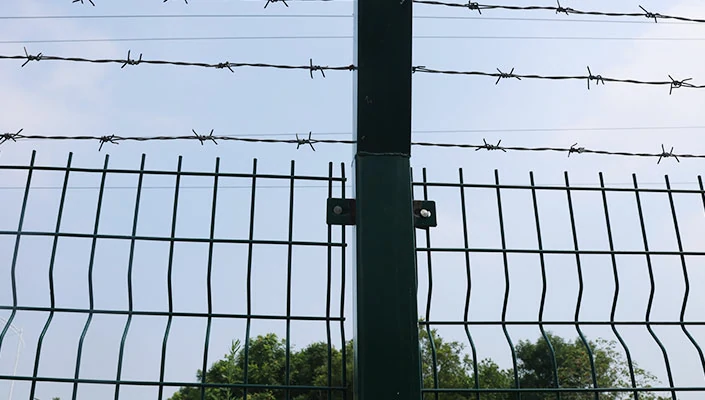Creating a Wire Fence to Enclose Your Garden Space
Creating a Wire Fence Around Your Garden A Practical Guide
When it comes to protecting your garden from pests and creating a defined outdoor space, a wire fence can be an excellent solution. Not only does it serve as a boundary, but it also provides a practical way to keep unwanted animals out while allowing air and light to permeate your plants. This article will delve into the various aspects of building a wire fence around your garden, including its benefits, types, installation tips, and maintenance.
Benefits of a Wire Fence
One of the primary benefits of constructing a wire fence around your garden is the increased protection it offers. Many gardens, particularly those with vegetables, fruits, and flowering plants, attract a variety of animals. Rabbits, deer, and even neighborhood pets can wreak havoc on your carefully tended plants. A wire fence acts as a physical barrier, making it difficult for these animals to invade your space.
A wire fence is also versatile. It can be adapted to suit various garden styles, from a rustic country look to a modern design. With various types of wire available, including welded, woven, and barbed wire, you can choose the option that best fits your aesthetic and practical needs. Furthermore, walls made of wire are generally less obtrusive than wooden or concrete fences, allowing your garden’s natural beauty to shine through.
Choosing the Right Type of Wire Fence
When selecting a wire fence for your garden, consider the size of the animals you are trying to deter. For smaller animals such as rabbits or groundhogs, a fence with closely spaced vertical wires that stands at least 3 to 4 feet tall is adequate. Additionally, burying the bottom of the fence a few inches deep can help prevent animals from digging underneath.
For larger animals like deer, a taller and sturdier fence is necessary. A typical deer fence should be at least 8 feet high to prevent these agile creatures from jumping over. You might also opt for a double-layered fence with one layer at the bottom and another higher up for extra security.
Installation Tips
Installing a wire fence might seem daunting, especially for beginners, but with a little planning and the right tools, it can be a manageable DIY project. Here are some essential steps to help you through the process
wire fence around garden

1. Plan Your Layout Before beginning, outline the area you wish to enclose. Use stakes and string to visualize your fence's perimeter, ensuring it's suitable for your planting and gardening needs.
2. Gather Materials Purchase the type of wire fencing that matches your requirements, plus fence posts, staples, and any necessary tools such as a post driver, pliers, and wire cutters.
3. Install the Posts Start by digging holes for your fence posts at regular intervals, usually 6 to 8 feet apart. Ensure that the posts are sturdy enough to withstand pressure and weather conditions by setting them deeply into the ground.
4. Attach the Wire Once your posts are in place, unroll the wire and attach it to the posts using staples or wire ties. Make sure the wire is tight and even, preventing sagging or gaps that could allow animals to enter.
5. Finishing Touches After securing the wire, add features like gates or additional barriers if needed. It's also a good idea to visually enhance your fence with climbing plants or decorative elements that will complement your garden design.
Maintenance
After constructing your wire fence, regular maintenance is crucial to ensure its longevity and effectiveness. Periodically check for rust or damages, particularly if you choose metal wire. Clearing away vegetation that may grow against the fence will also prevent it from getting damaged over time.
Conclusion
Building a wire fence around your garden offers numerous advantages, from protecting your plants to adding an attractive boundary. By understanding the types of wire fences available and following proper installation techniques, you can create an effective barrier tailored to your garden's specific needs. With minimal upkeep, your wire fence will not only safeguard your plants but will also enhance the overall aesthetic of your outdoor space. Ultimately, a wire fence could be a worthwhile investment that promotes the health and beauty of your beloved garden.
-
Weather Resistance of Woven Wire and Chicken Wire Fencing MaterialsNewsJun.05,2025
-
Umbrella Nails Innovations in Roofing Fasteners for Wind ResistanceNewsJun.05,2025
-
Modern Barbed Wire Fence Designs for Perimeter ProtectionNewsJun.05,2025
-
How Iron Nail Wire Enhances Nail Strength and Installation EfficiencyNewsJun.05,2025
-
High-Security Razor Fence Solutions for Perimeter ProtectionNewsJun.05,2025
-
Durable Wire Netting Fence Solutions for Animal EnclosuresNewsJun.05,2025




